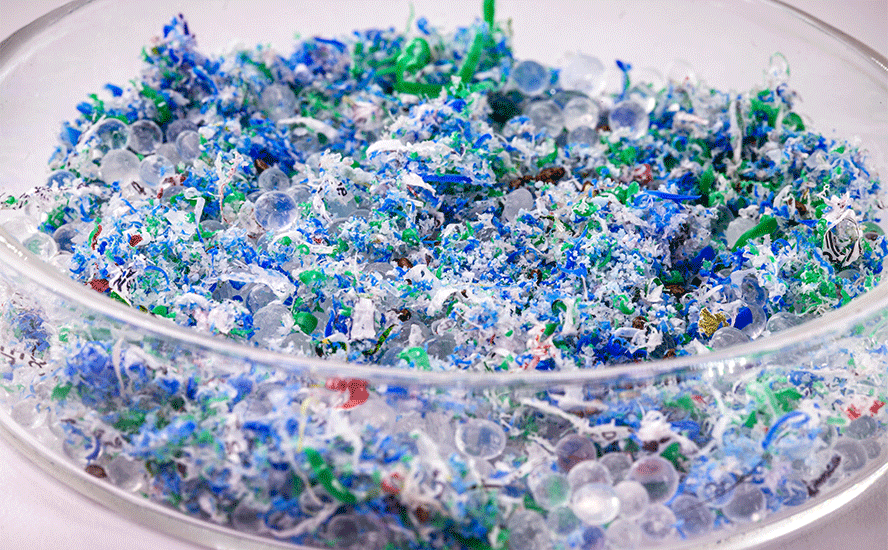Pandemic fears: real and imagined

2020.02.22
“Pandemic”. Few words in the English language conjure as much fear. The mere utterance evokes images of dying patients, surgical masks, haz-mat suits, a parade of coffins, helpless doctors and nurses, as the contagion spreads, first striking down the elderly and infirm, then the healthy, indiscriminately killing whoever it comes into contact with – old, young, rich, poor, male, female, white, black, gay, straight.
The China-based coronavirus, that within two months has spread to 24 countries including Canada, indeed our home province of British Columbia where five cases have been reported, is a classic pandemic, defined as the worldwide spread of a new disease, beyond what would be considered normal in a geographical region.
There is a difference between bacteria-caused plagues and virus-caused events. The plague is an infectious disease caused by yersinia pestis, which mainly effects rodents and is spread by insects to humans.
Viral pandemics are often attributed to influenza.
According to the World Health Organization, An influenza pandemic occurs when a new influenza virus emerges and spreads around the world, and most people do not have immunity. Viruses that have caused past pandemics typically originated from animal influenza viruses.
The current pandemic causing so much global angst, more properly classified as 2019-nCoV, is a new strain of the coronavirus family, found in both animals and humans. Coronaviruses cause illness ranging from the common cold to more severe diseases such as Middle East Respiratory Syndrome (MERS) and Severe Acute Respiratory Syndrome (SARS).
Pandemics are capable not only of causing far-flung sickness, death and misery to sufferers and their friends or families, but economic chaos due to the need for quarantines, the shutting of mines, factories, shops, really any workplace that can facilitate its spread, causing major disruptions to supply chains including delays, lost productivity, temporary closures or even bankruptcies.
Case in point: Chinese copper buyers have asked Chilean miners to delay shipments due to port shutdowns. Ocean freight carriers are refusing to dock in China, same as airlines have canceled flights. Some mining companies have had trouble delivering supplies due to transportation blockages and delays.
China’s housing prices have fallen and large swathes of Chinese industry have not re-opened after Chinese New Year because migrant workers, afraid to return to the cities, are staying in their home villages. The loss of these workers/ shoppers has dented China’s increasingly consumer-oriented economy. The spread of the virus has impaired Beijing’s ability to meet its obligations under the Phase 1 trade agreement reached in January between the United States and China, including China’s purchase of an additional $200 billion worth of US goods.
In a move that could’ve been mistaken for the Federal Reserve, China has flooded its economy with bank credit in an effort to protect fragile growth. South China Morning Post reports commercial banks extended US$477 billion of credit in January, equivalent to the country’s total bank loans for the whole of 2007.
While nCoV has mostly affected China, clearly the longer it goes on, and the farther it spreads, the more damage it will cause. Speaking to CNN about its economics effects, the chief advisor to Allianz said,
“They first paralyze the region of the virus outbreak. Then they gradually spread domestically, undermining internal trade, consumption, production and the movement of people. If the virus is still not contained, the process spreads further, including regionally and internationally by disrupting trade, supply chains and travel.”
Given the human and monetary implications of n-CoV, and the long history of human/ animal-spread diseases, we decided to look at pandemics, not only from a historical perspective but the future: What kind of widespread pestilence is coming for us? How bad could it get, and what can we do to prepare for it?
Plagues
When early humans roamed the earth in small tribes, never settling for long in one place, there was little chance of disease taking hold. That changed with the agricultural revolution about 10,000 years ago. When humans began living next to animals, it facilitated the spread of bacteria and viruses between farmers and cattle.
Place any infectious disease in an area crowded with animals or people, and it is sure to spread rapidly.
Among the first pandemics were plagues. A video by National Geographic identifies three major plagues throughout history – the Plague of Justinian (AD 541), the Black Plague (AD 1348) and the Third Pandemic (AD 1855). While they occurred centuries apart, all shared three things in common: increased international trade, rising urban population and lack of medical knowledge.
For example the Plague of Justinian, which killed half of Europe, was spread by traders moving throughout the Byzantine Empire. Rapid urbanization without proper sanitation led to the accumulation of waste in crowded neighborhoods. Cities and their residents became incubators for germs and diseases.
Unsanitary living conditions contributed to the Black Plague, which began in China and the Middle East where it killed millions, before migrating to Europe via Silk Road trade; the disease wiped out about a third of Europe’s population.
At the time, medical knowledge was sparse and minority groups were sometimes blamed, and punished, for causing indiscriminate death.
Victims were sent to witch doctors and blood-letting was a common, though ineffective treatment. Despite the advance of medical science, plagues continued to run rampant as recently as the 19th century. Outbreaks in India reached port cities in China and within 100 years, plague spread to every continent but Antarctica.
The Third Pandemic was finally stopped in 1894 with the discovery of the plague bacteria. Further developments in microbiology, medicine, urban planning and sanitation eventually eradicated the disease.
Flus & viruses
What has been the deadliest disease in history? Going by the number of dead, mortality rate and speed of outbreak, the plague, cholera, smallpox and influenza are all contenders, but it was the 1918 Spanish Flu that tops the body count.
Between 1918 and 1920 the uber-deadly strain of influenza infected about 500 million people – an astounding third of the world’s population – and killed 20-50 million. The Spanish Flu had an extremely high mortality rate of 10 to 25%; in the first 25 weeks up to 25 million died. Mysteriously, this flu attacked not only the elderly, weak and very young, but healthy adults. It was not uncommon for an afflicted patient to be dead within a few hours of contracting the disease.
Three more flus make it into MPH Online’s grisly top 10 list of the worst pandemics. The 1889-90 Flu, otherwise known as the Asiatic or Russian Flu, was first observed in Central Asia, northwestern Canada and Greenland. It went global through urbanization, and is considered the first epidemic. The Asian Flu originated in China, in 1958. Its two-year spread resulted in about 2 million dead, including 69,800 in the United States. The Hong Kong Flu of 1968 was a fast-spreading H3N2 strain of the influenza A virus. It only took 17 days before outbreaks were reported in Singapore and Vietnam, and within three months cases were showing up in the Philippines, India, Australia, Europe and the US. Though it only had a 0.5% mortality rate, the Hong Kong Flu still killed over a million people including 500,000 residents of Hong Kong, about 15% of its population.
More recently we have the Avian Flu and Severe Acute Respiratory Syndrome (SARS). As the name suggests, the 1997 Avian Flu was spread through contact with infected poultry. From its first major outbreak in Hong Kong to the last in 2003, “bird flu” killed 257 – over 60% of those who contracted the virus.
SARS, the pandemic to which 2019-nCoV is often compared, was a quick-moving virus that started in Guangdong province, China. In 2003, SARS spread to over 30 countries within a few months, infecting 8,000 and killing 774. This compares to the coronavirus death toll of 2,244, as of this writing, with all but 11 mortalities in China, and over 76,000 infected worldwide.
Then there’s cholera, particularly the Third and Sixth Cholera outbreaks, which killed a respective 1 million and +800,000. Transmitted by contaminated water, both cholera pandemics originated in India and (between them) spread to Asia, the Middle East, North Africa, Eastern Europe, Russia and America.
Going beyond flus, plagues and cholera, MPH puts HIV/ AIDS at the top of its list with a death toll of 36 million since 1981. While there are still between 31 and 35 million infected with HIV, new pharmaceutical treatments have prolonged lives.
The most resilient of pandemics must be smallpox. Throughout its 12,000-year existence, smallpox has killed a mind-blowing 300-500 million people.
Ebola is often lumped in with historical pandemics, having ended over 11,000 lives, but because it is confined to West Africa, Ebola is considered an epidemic not a pandemic. It is still obviously a very serious disease.
Coronavirus
That brings us to our latest pandemic, 2019-nCoV. Having created a timeline of sorts, we can place nCoV as more deadly than SARS and the Avian Flu, but still quite a ways from the Sixth Cholera outbreak which resulted in 800,000 dead, or other influenza outbreaks whose body counts go into the millions.

The virus is similar to other respiratory illnesses. Symptoms include a fever, dry cough, sore throat and headache. It may also cause shortness of breath and pneumonia. It was first detected in the city of Wuhan, in China’s Hebei province. Medical researchers pinpoint the exact epicenter to the Huanan Seafood Market, where it is presumed infection resulted from exposure to live animals.
Since the start of the outbreak in December, cases have surfaced without exposure to animals or food markets – the virus is also spread between people.
A number of alternative theories as to how the virus originated have made their way onto the Internet in recent weeks.
One of the most talked-about: the coronavirus is a biological weapon that was leaked from a secret Wuhan laboratory – possibly having been stolen from a Canadian virus research lab by Chinese scientists. Senator Tom Cotton publicized the claim on Fox News but according to an article in Business Insider, scientists at the Wuhan lab experiment with dangerous pathogens like Ebola, but there is no evidence the lab either made 2019-nCoV as a weapon or allowed it to escape.
Two tropes cited by The Saker blog (fake news alert): people are being arrested widely including in Canada and the US; people are being killed – citing a Canadian scientist found dead in Africa.
Other theories deemed as misinformation by Wikipedia include: the cause of the outbreak was due to locals eating bats; that the outbreak was a population control scheme by the Pirbright Institute in England and by Bill Gates.
Deadly flu
Lost in the media storm of coronavirus coverage is the prevalence of the ordinary flu virus which has reportedly killed an estimated 10,000 Americans this flu season. Amid much hand-wringing over the 12 confirmed US coronavirus cases, the CDC reports at least 19 million people in the US have gotten the flu, 180,000 have been hospitalized and 10,000 have died, including 68 children.
Another 14 infected by nCoV were all passengers on the cruise ship ‘Diamond Princess’ that was quarantined off Japan. The CDC calls the coronavirus a “very serious public health threat” but adds that its immediate health risk to the American public is low.
Zombie virus?
That may be true, but what concerns us, at AOTH, is these viruses appear to be coming fast and furious. We’d also like to know, how afraid should we be of viruses mutating into something even more deadly?
According to The Conversation, The first report of human virus infection was yellow fever in the US army at the turn of the 20th century. And now, estimates suggest three to four new species of human viruses are found each year and around 250 human virus species are yet to be discovered.
The UN attributes population growth as the likely cause of increased viruses. The 1% annual increase means potential incubators are increasing. The fact that most of this new population is concentrated in cities allows for an environment more conducive to the spread of virus. No surprise there. Dangerous viral infections are also being transmitted from animals to humans – with bats being a common culprit. Scientists have traced what they think was the source of the Ebola virus to a bat colony near an abandoned mineshaft in Liberia.
How about the future? Could long-dead viruses get re-born and become extremely dangerous pandemics of diseases people no longer have immunity against? There is some suggestion of this, from viruses emerging from the permafrost due to global warming.
In 2016 the idea literally “came to life” when a large outbreak of anthrax struck Siberia. A heat wave had warmed a thick layer of permafrost, under which a number of reindeer had died of anthrax. When their bodies thawed, so did the anthrax spores, which spread across the tundra, infecting dozens of people who were hospitalized, and killing a 12-year-old boy.
Live Science notes that anthrax is notoriously hardy, with its infectious spore surrounded by a protein shell that can keep it safe for centuries, in soil.
“Permafrost is a very good preserver of microbes and viruses, because it is cold, there is no oxygen, and it is dark,” the BBC quotes evolutionary biologist Jean-Michel Claverie at Aix-Marseille University in France. “Pathogenic viruses that can infect humans or animals might be preserved in old permafrost layers, including some that have caused global epidemics in the past.”
Other “zombie pathogens” and diseases that could be released by melting permafrost and global warming include the zika virus which, carried by mosquitoes, can cause miscarriages in pregnant women; a 30,000-year-old “giant virus” found in the Siberian tundra that affects amoebas; tick-borne illnesses like Lyme disease; and increased cholera, caused either by increased heat and flooding, or concentrated in small pools of stagnant water found in drought-prone areas.
As for whether a virus, say the rabies virus that makes animals or humans violently angry, could mutate into a “zombie virus” imitating behaviours seen in flicks like ‘28 Days Later’ and ‘I Am Legend’, the answer is “highly unlikely”.
According to a National Geographic article that addresses the question, mutating rabies is possible, but to make a zombie virus work, rabies’ incubation time would have to be reduced dramatically – from up to a year in the human body, to hours. It would also have to be much more contagious, ie., transmissible by air.
However for that to happen, rabies would have to borrow traits from another virus such as influenza, the article explains. The problem is, unrelated viruses don’t hybridize in nature, because they are too different. The only way to do it is through genetic engineering in a lab.
Samita Andreansky, a virologist at the University of Miami’s Miller School of Medicine in Florida, who appeared in the 2010 National Geographic Channel documentary ‘The Truth Behind Zombies’, is quoted saying,
“Sure, I could imagine a scenario where you mix rabies with a flu virus to get airborne transmission, a measles virus to get personality changes, the encephalitis virus to cook your brain with fever”—and thus increase aggression even further—” and throw in the ebola virus to cause you to bleed from your guts. Combine all these things, and you’ll [get] something like a zombie virus,” she said.
“But [nature] doesn’t allow all of these things to happen at the same time. … You’d most likely get a dead virus.”
Nature doesn’t allow all of those things to happen. But in a lab?
Conclusion
Here are the facts: we have a new pandemic called 2019-nCoV, which is a coronavirus, the same virus family as SARS. So far the Wuhan coronavirus (which is easier to say and write) has infected far more than SARS and surpassed its death toll by quite a bit. We don’t know how far it will spread and what the final death toll will be. What we do know is that new strains of flu and other viruses are emerging more frequently, due to population increase and over-crowding.
We also know that more pathogens are likely hidden under the permafrost which is rapidly melting in the Arctic due to climate change. In global warming, the poles are warming faster than the rest of the Earth. It seems to be a subject of scientific debate as to how likely it is for these long-dead viruses to become a problem. Judging from the literature on the subject, the possibility has not been dismissed.
In light of these real and possible pandemic scares, we believe it’s prudent to be prepared. How does one prepare for a pandemic? The same way you’d prepare for a major emergency like an earthquake, forest fire or flood. Set aside enough food and water for an extended period of time – long enough for you and your family/ close friends to wall yourselves off from the rest of the population who, in this scenario, would impose a very real and probable risk of infection.
Along with basic supplies, you should also have some rolls of cash and a cache of gold and silver coins. (silver is best for day to day transactions) The latter might seem alarmist but consider how much damage to the global economy the coronavirus has done in just a couple of months. A really serious pandemic that spreads like wildfire through Canadian and American cities would presumably cause a financial crisis the likes of which we probably have never seen.
Until financial stability is restored you’ll want to carry with you the only form of currency that can both serve as a substitute for cash and a store of value that will not suddenly become worthless: gold and silver bullion.
Richard (Rick) Mills
subscribe to my free newsletter
aheadoftheherd.com
Ahead of the Herd Twitter
Legal Notice / Disclaimer
Ahead of the Herd newsletter, aheadoftheherd.com, hereafter known as AOTH.
Please read the entire Disclaimer carefully before you use this website or read the newsletter. If you do not agree to all the AOTH/Richard Mills Disclaimer, do not access/read this website/newsletter/article, or any of its pages. By reading/using this AOTH/Richard Mills website/newsletter/article, and whether or not you actually read this Disclaimer, you are deemed to have accepted it.
Any AOTH/Richard Mills document is not, and should not be, construed as an offer to sell or the solicitation of an offer to purchase or subscribe for any investment.
AOTH/Richard Mills has based this document on information obtained from sources he believes to be reliable but which has not been independently verified. AOTH/Richard Mills makes no guarantee, representation or warranty and accepts no responsibility or liability as to its accuracy or completeness. Expressions of opinion are those of AOTH/Richard Mills only and are subject to change without notice. AOTH/Richard Mills assumes no warranty, liability or guarantee for the current relevance, correctness or completeness of any information provided within this Report and will not be held liable for the consequence of reliance upon any opinion or statement contained herein or any omission. Furthermore, AOTH/Richard Mills assumes no liability for any direct or indirect loss or damage or, in particular, for lost profit, which you may incur as a result of the use and existence of the information provided within this AOTH/Richard Mills Report.
AOTH/Richard Mills is not a registered broker/financial advisor and does not hold any licenses. These are solely personal thoughts and opinions about finance and/or investments – no information posted on this site is to be considered investment advice or a recommendation to do anything involving finance or money aside from performing your own due diligence and consulting with your personal registered broker/financial advisor. You agree that by reading AOTH/Richard Mills articles, you are acting at your OWN RISK. In no event should AOTH/Richard Mills liable for any direct or indirect trading losses caused by any information contained in AOTH/Richard Mills articles. Information in AOTH/Richard Mills articles is not an offer to sell or a solicitation of an offer to buy any security. AOTH/Richard Mills is not suggesting the transacting of any financial instruments but does suggest consulting your own registered broker/financial advisor with regards to any such transactions
Legal Notice / Disclaimer
Ahead of the Herd newsletter, aheadoftheherd.com, hereafter known as AOTH.Please read the entire Disclaimer carefully before you use this website or read the newsletter. If you do not agree to all the AOTH/Richard Mills Disclaimer, do not access/read this website/newsletter/article, or any of its pages. By reading/using this AOTH/Richard Mills website/newsletter/article, and whether you actually read this Disclaimer, you are deemed to have accepted it.


























